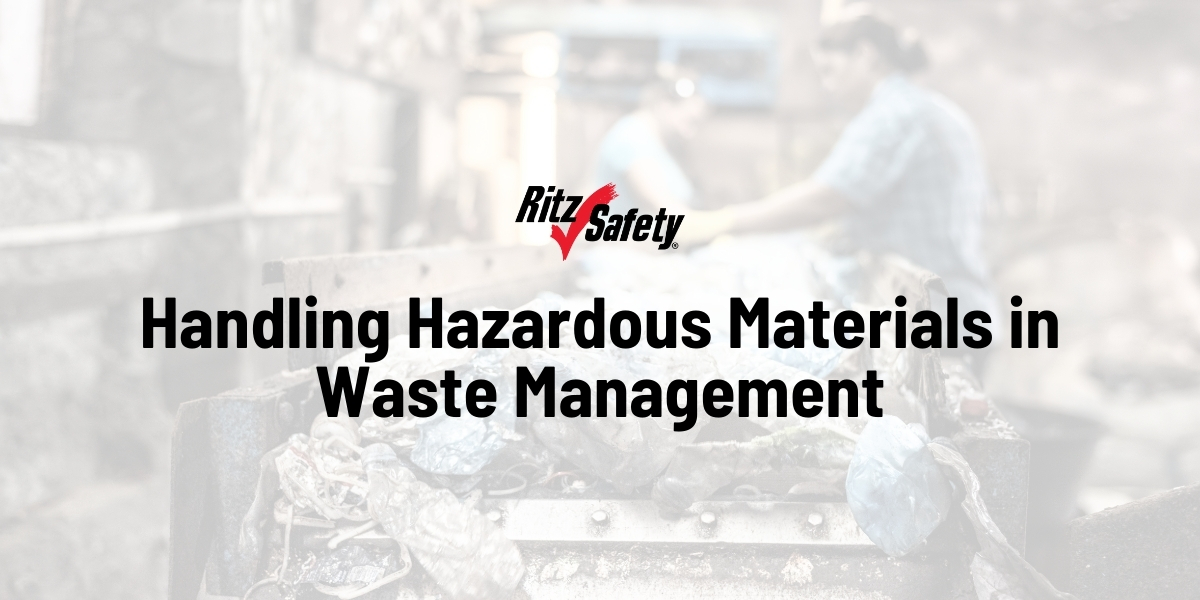
Handling Hazardous Materials in Waste Management
When you’re out in the thick of things, sorting through piles of waste and recycling materials, do you take the time to think about your safety? While you’re hard at work doing your job, you can be exposed to some pretty hazardous things, from chemicals to germs, fungi, sharp objects and more! All of which can be dangerous to your health and safety.
Think about it: when you’re handling all kinds of waste, from household garbage to industrial scraps, there’s a whole cocktail of hazards hiding in there. In fact, multiple sources, including OSHA and the Solid Waste Industry report incidents of workers in the waste and recycling industry being exposed to hazardous materials leading to injuries and illnesses such as chemical burns, respiratory problems, skin disorders, and more!
But here’s the thing, you have a way to protect yourself against these hazards: PPE. From gloves to respirators to goggles, wearing the right PPE for your job is a lifesaver. Literally. We want to make sure you’re aware of the hazards you face and are set up with the right gear to keep you safe. Keep reading to learn more and make sure you’re staying safe on the job!
Top Health Risks You Face in Waste & Recycling
There are a large number of risks you must face in the waste and recycling industry. However, today, let’s start off by going over just some of the top biohazards and health risks you face due to the nature of your work environment in waste and recycling. We’ll cover the hazard and then provide our suggestions of safety gear you can use to help protect yourself from the hazard.
Exposure to Hazardous Chemicals
While working in a waste and recycling facility, you can be exposed to a variety of chemicals. Whether it be chemicals your facility introduces for cleaning, or hazardous chemicals found within the waste, you may be exposed to chemicals such as cleaning agents, solvents, pesticides, and much more! All of which can pose health risks if you’re not properly protected.
To help protect yourself from these hazardous chemicals, it’s suggested to wear PPE such as chemical-resistant gloves and a chemical-resistant apron or suit. It’s also suggested to wear eye protection. Sealed safety goggles are a great starting point as they can help provide further protection from chemicals entering your eyes. When needed, also wear a respirator with the appropriate cartridge or filter for chemical vapors or particulates.
Exposure to Biological Hazards
You may also come into contact with biological hazards in organic waste materials, such as bacteria, viruses, fungi, and parasites, all of which can cause infections and diseases. Somethings that best when avoided.
Prepare yourself for these hazards by donning disposable gloves and suits, a respirator to prevent inhalation of airborne pathogens, and eye protection!
Respiratory Hazards
While we already touched on the importance of wearing respiratory protection in the face of the previous two hazards, respiratory protection is also important to protect yourself from a variety of other hazards. Whether it be inhalation of dust, particulate matter, or fumes generated during waste sorting, processing, and disposable, these hazards can lead to respiratory issues such as asthma, bronchitis, and lung irritation.
It's a good idea to evaluate your environment on the hazards present, how long you would be exposed to these hazards, and the exposure limits to decide if you need respiratory protection, and if so, which type. Some of our favorite respiratory protection products are below.
Injuries from Sharps and Hazardous Objects
You can also become injured by sharp and hazardous objects while working in waste and recycling. From needles to broken glass, sharp metal edges to protruding nails, waste and recycling material is full of things that increase risks of cuts, punctures, and lacerations. These are not only painful injuries, but they can also become easily infected in the waste and recycling environment, making them even more dangerous.
To better prepare yourself to face these hazards, we recommend wearing a variety of cut-resistant clothing from gloves to sleeves, and in some cases, even puncture-resistant footwear.
Conclusion
So, as you dive into your next day’s work in waste and recycling, remember to prioritize your safety above all else. The hazardous materials found in every pile of waste may not be clear at first, but they’re very real and can pose serious risks to your health and safety.
We’ve covered a few of the dangerous you face from hazardous materials and provided suggestions for the best safety gear to help keep you protected in waste management. However, if you need further help finding the right PPE for the specific hazards you encounter in your line of work, don’t hesitate to reach out. Your safety matters, and we’re here to help you safeguard it every step of the way!
Stay safe out there and thank you for making a difference in our communities!











